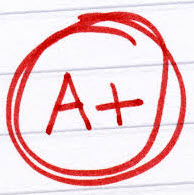The new Regulation A+ offerings, which are available for use starting on June 19, 2015, should not be thought of in the same category as Regulation D offerings. If a company’s primary goal is to raise as much money as possible with as little offering-related and ongoing securities compliance as possible, you still can’t beat Regulation D. Rather, Regulation A+ offerings will be useful to smaller companies who want some of the advantages of going public, without having to rely on imperfect solutions like reverse mergers or self-filing registrations.
 Unlike small companies that go public through means like a reverse merger, companies relying on Regulation A+ are not subject to the high ongoing disclosure burdens of public companies. Tier 2 offerings under Regulation A+ (up to $50 million) impose limited ongoing disclosure requirements as compared to the burdens imposed on traditional public companies, and Tier 1 offerings (up to $20 million) don’t impose any ongoing requirements at all after initial clearance with the SEC and state blue sky regulators (the latter of which is preempted for Tier 2 offerings). Many small companies that go public via reverse mergers find it difficult to keep up with the compliance costs of being a public company; companies using Regulation A+ will not have the same issue.
Unlike small companies that go public through means like a reverse merger, companies relying on Regulation A+ are not subject to the high ongoing disclosure burdens of public companies. Tier 2 offerings under Regulation A+ (up to $50 million) impose limited ongoing disclosure requirements as compared to the burdens imposed on traditional public companies, and Tier 1 offerings (up to $20 million) don’t impose any ongoing requirements at all after initial clearance with the SEC and state blue sky regulators (the latter of which is preempted for Tier 2 offerings). Many small companies that go public via reverse mergers find it difficult to keep up with the compliance costs of being a public company; companies using Regulation A+ will not have the same issue.
Unlike Regulation D offerings, Regulation A+ permits a limited amount of securities to be sold by existing stockholders – up to $6 million in Tier 1 offerings, and up to $15 million in Tier 2 offerings. As a result, the company’s early investors and founders have an opportunity to cash out and realize a profit on their investment of money or time. Additionally, the shares purchased in a Regulation A+ offering are unrestricted, meaning there’s a potential for a secondary market to emerge in the company’s shares. In most cases, there won’t be high trading volume comparable to large public companies, but this is already the case with small companies that go public via a reverse merger or otherwise.
Another factor that could cause a company to opt for a Regulation A+ offering is when the target investor base has several non-accredited investors. Under Regulation D, a Rule 506(b) offering permits no more than 35 non-accredited investors, and a Rule 506(c) offering (i.e., generally solicited) permits zero non-accredited investors. In contrast, non-accredited investors can freely participate in Regulation A+ offerings, though in the case of Tier 2 offerings, an investor can invest no more than 10% of the investor’s annual income or net worth, whichever is greater.